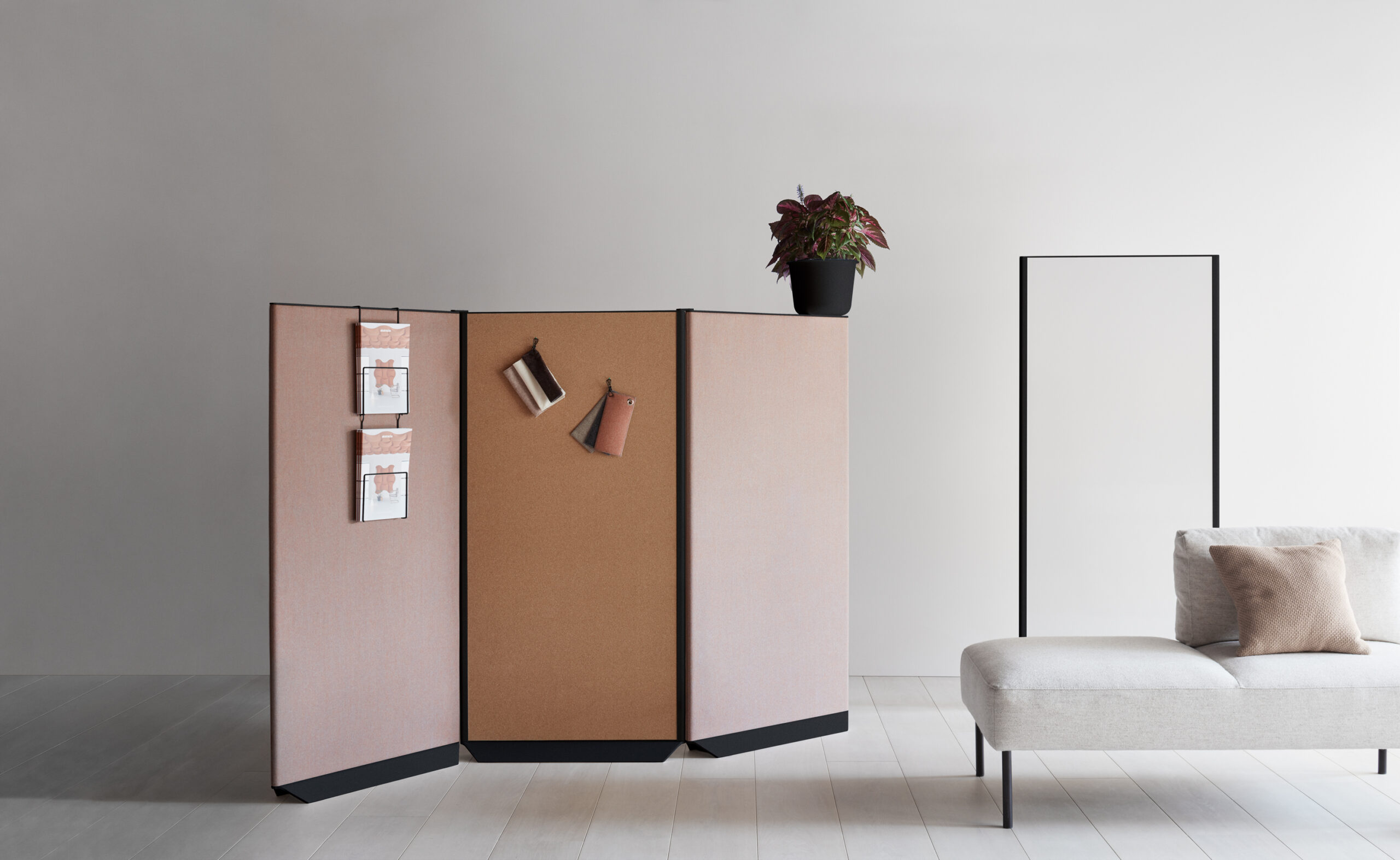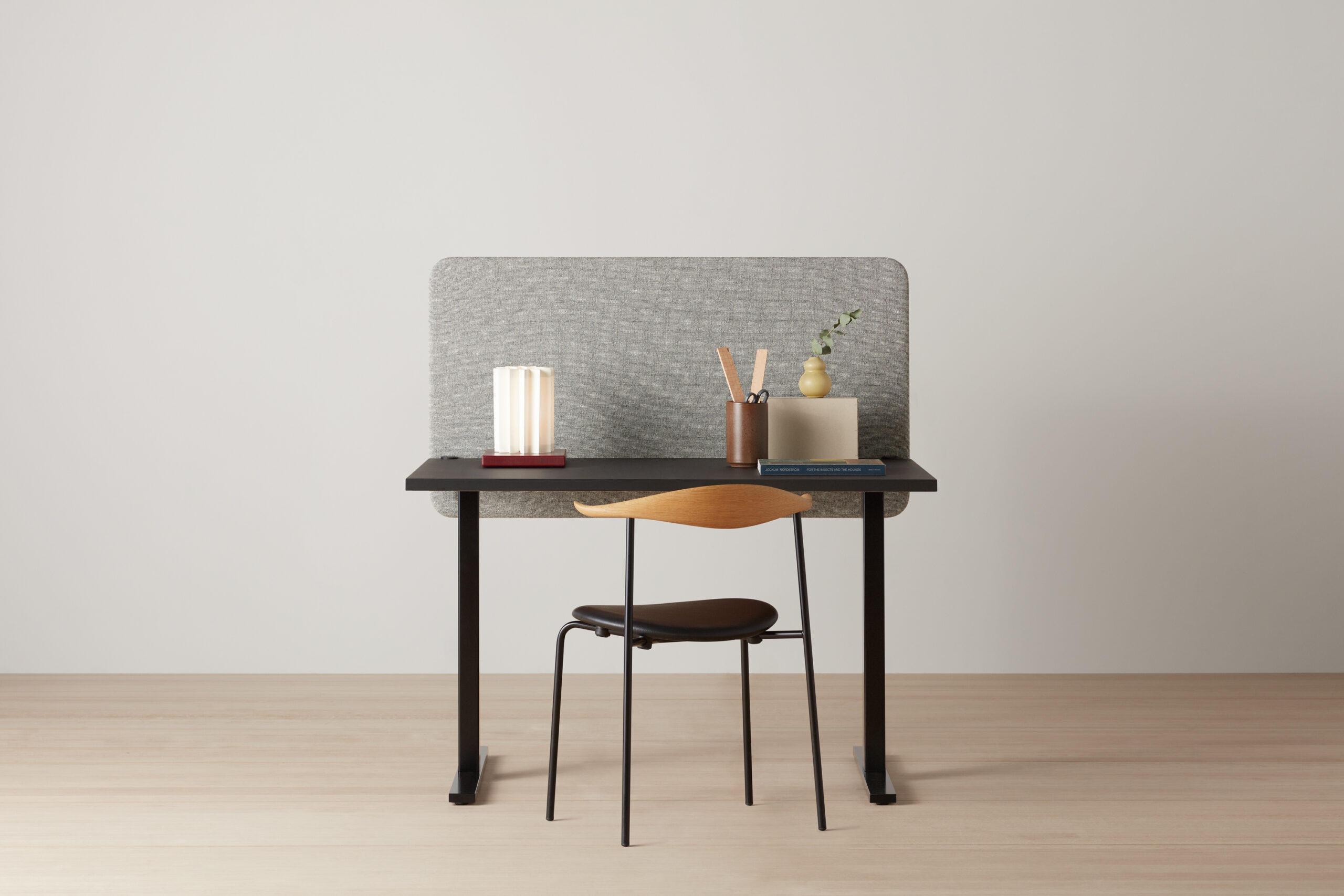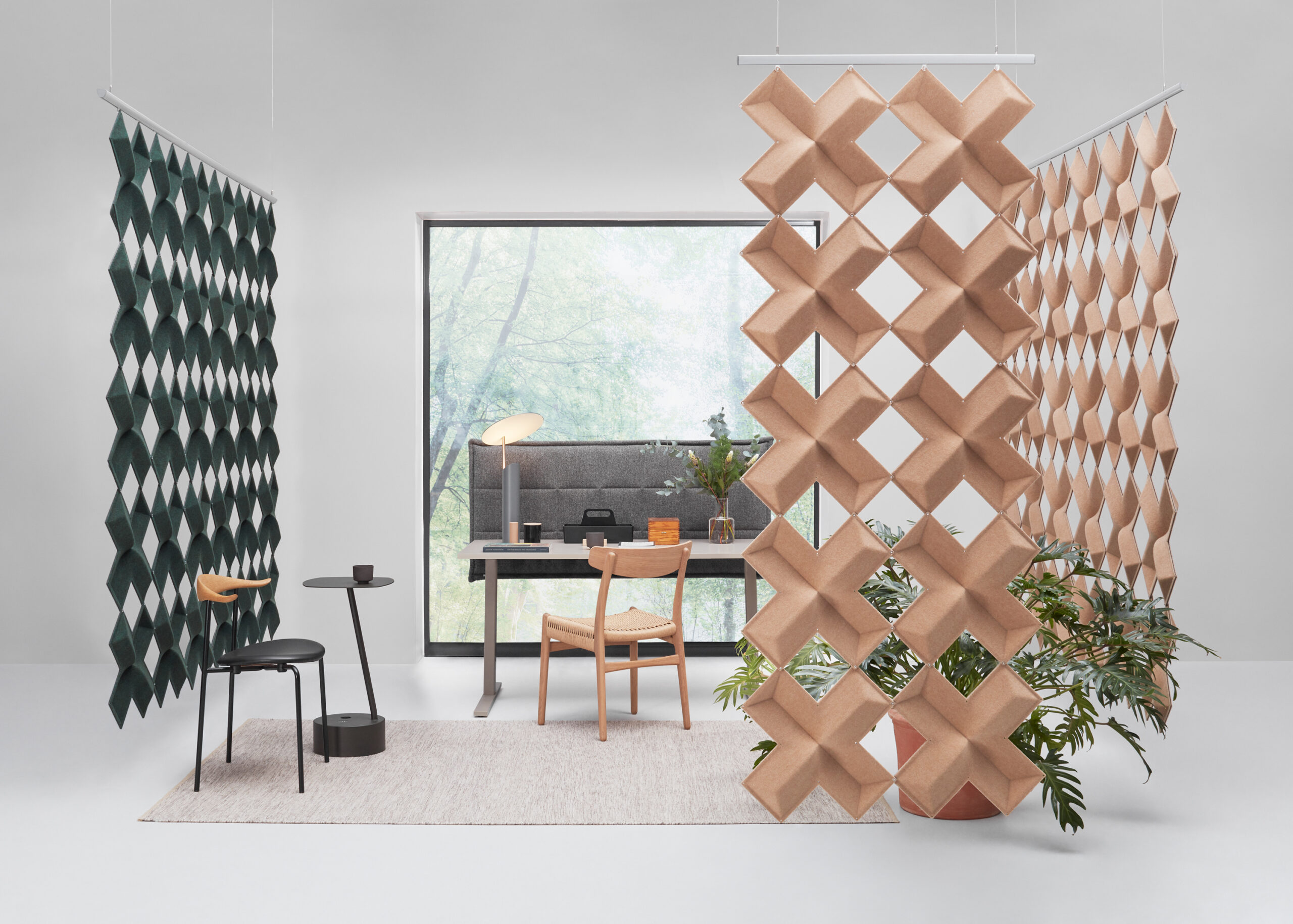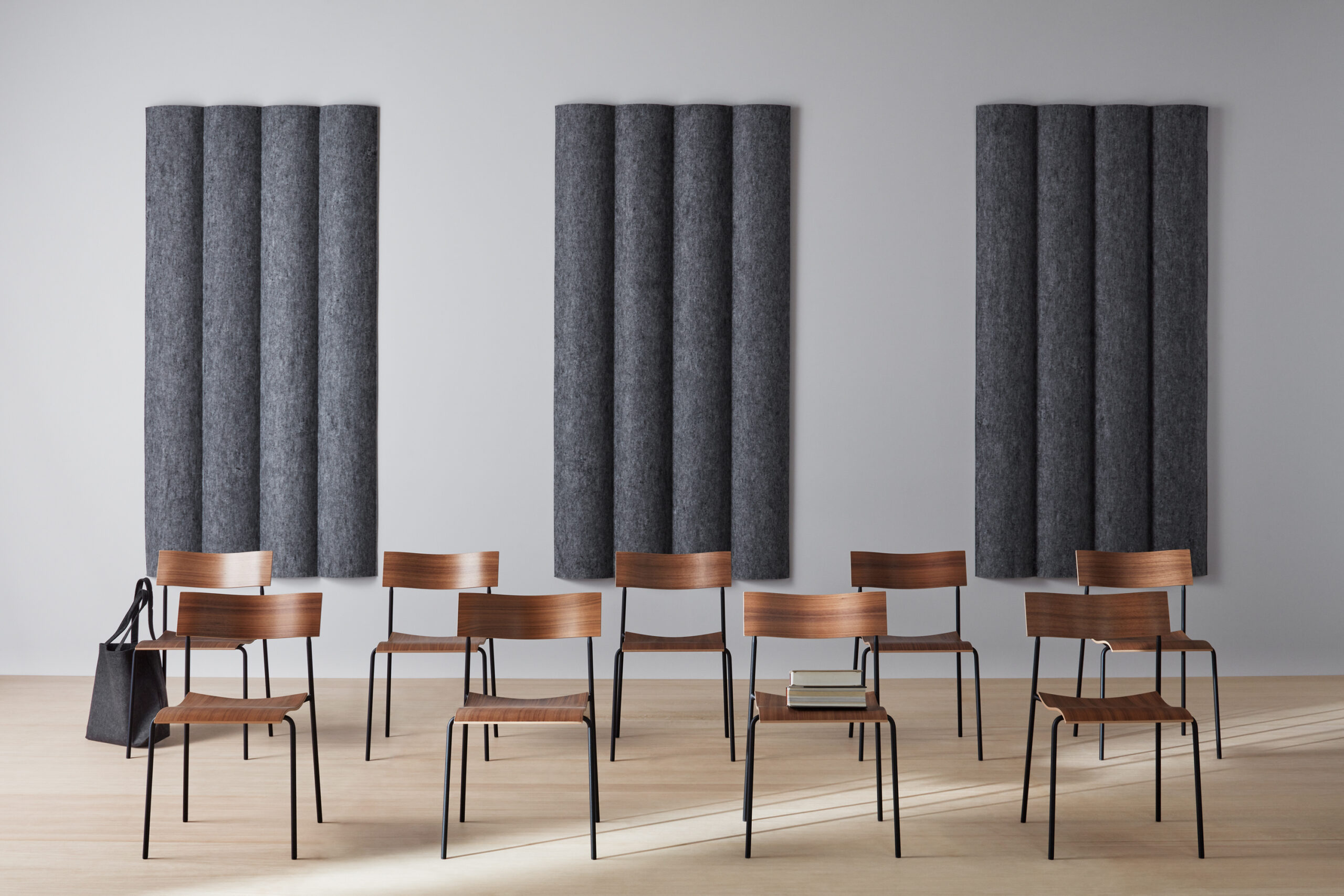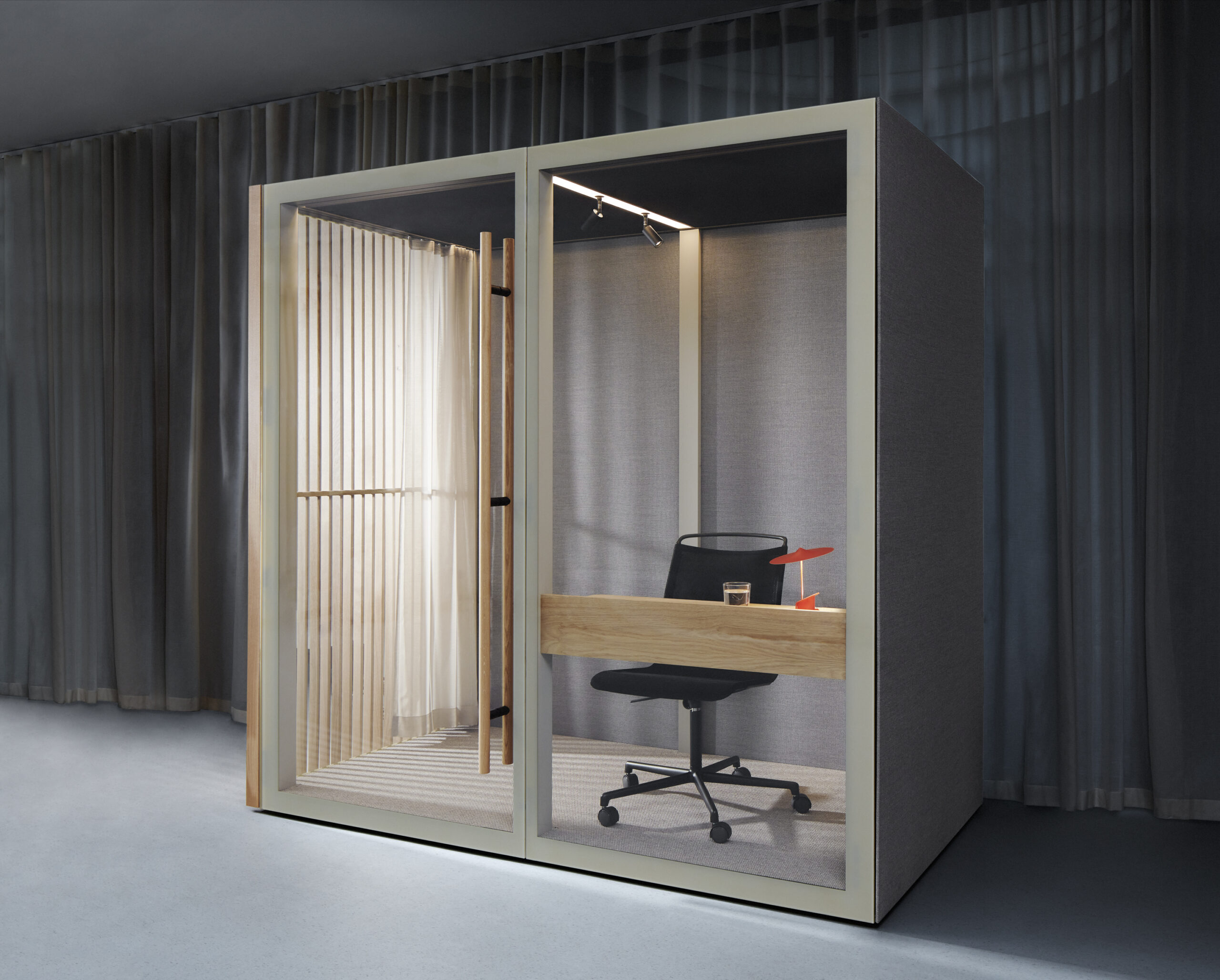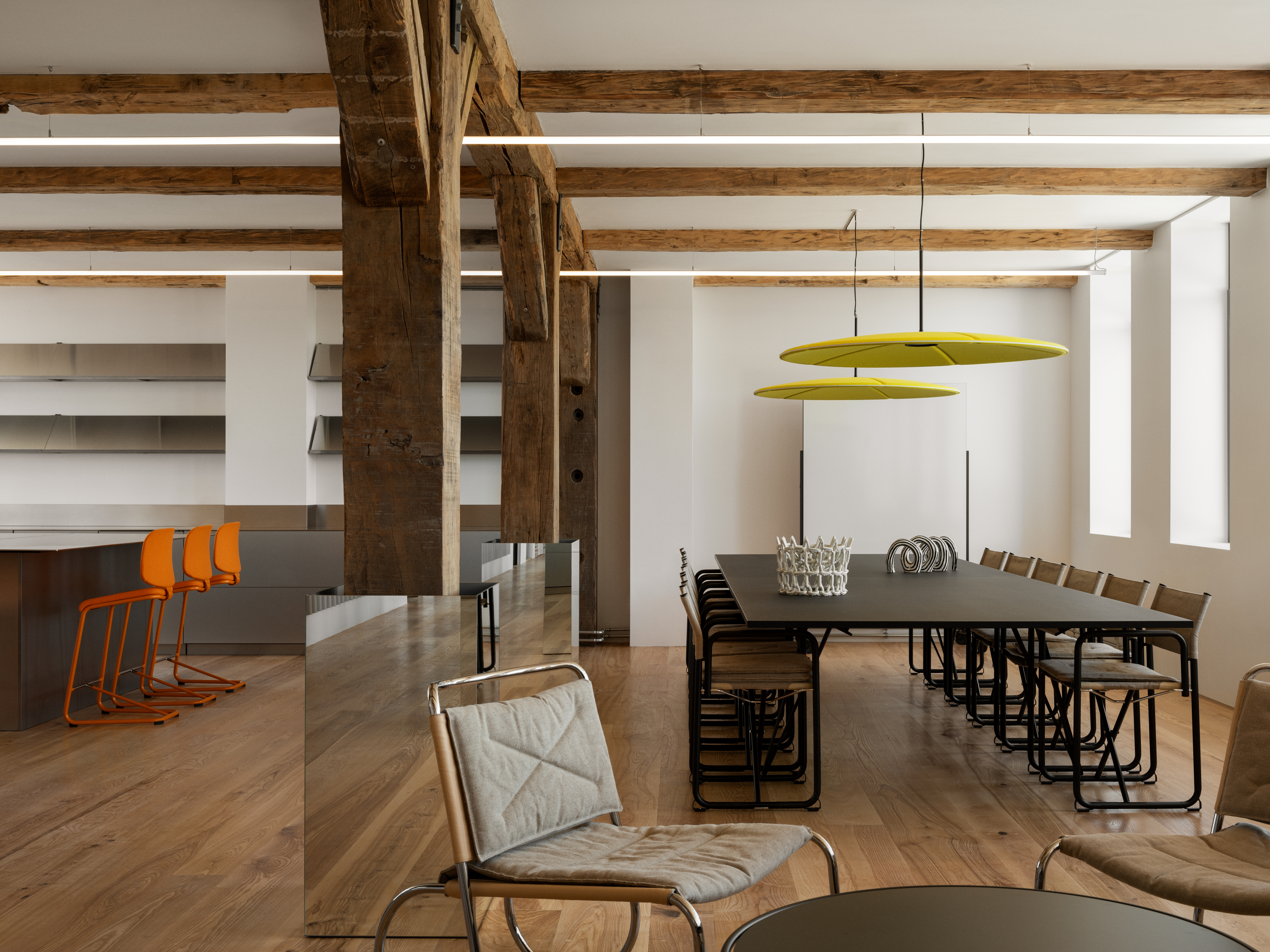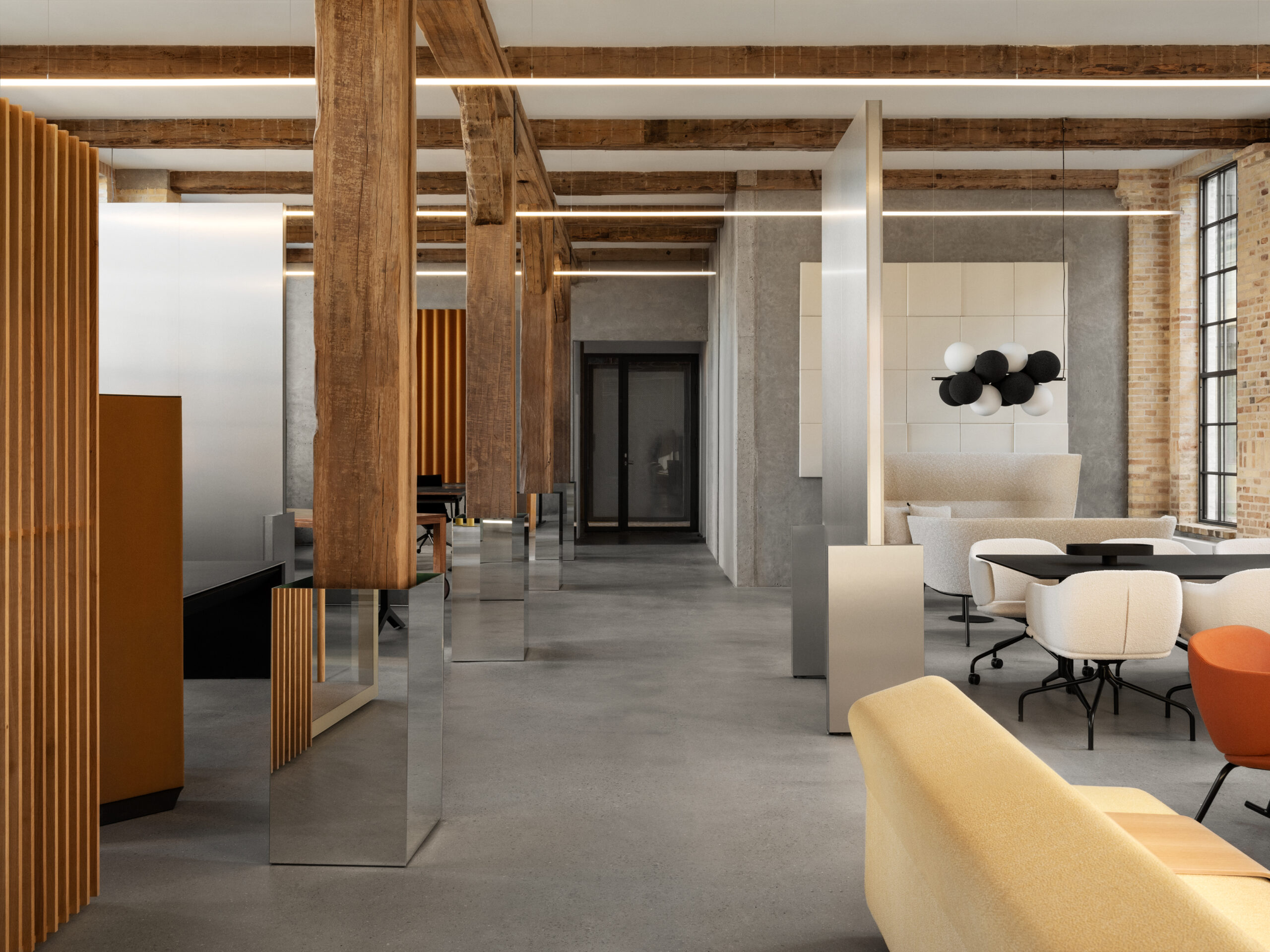
How does the soundscape affects our well-being?
We are surrounded by sounds that affect our well-being and performance: voices, ringtones, email notifications, fans, traffic, footsteps, and more. Excessive noise exposure can lead to stress, fatigue, and reduced focus. Research shows that noisy soundscapes can decrease our cognitive performance by as much as 14% compared to how well we perform in more harmonious environments. Disharmonious soundscapes often result from a long reverberation time – the time it takes for a sound to cease – in relation to the size of the room. This is a common problem in environments like open office spaces, schools, and restaurants. The fundamental issue is that many offices are dominated by hard materials like glass, stone, concrete, MDF boards – materials that reflect sound and thus extend the reverberation time. Fortunately, it is possible to lower sound levels and thus improve people’s well-being and performance with simple measures. The soundscape affects how well we perceive words in conversations with others. It can be challenging to follow conversations in noisy environments with a lot of background noise and long reverberation times. This is an even bigger problem for people with hearing impairments.
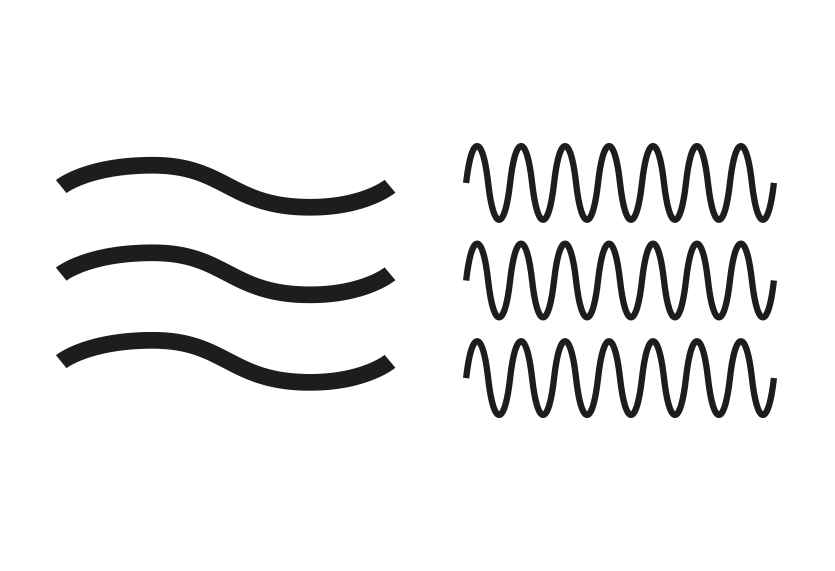
What is sound?
When we talk about acoustics, we usually refer to a room’s acoustic conditions. However, the word also refers to the science of sound. It comes from the Greek “akoustos,” which means “audible.” Sound is pressure waves in the air. Sound has different characteristics due to differences in wavelength. Long sound waves have low frequency and create dark tones. Short sound waves have high frequency and create bright tones. The wavelength’s frequency is measured in Hertz (Hz). Sound intensity is measured in decibels (dB).Whether a room has good or poor acoustics fundamentally depends on two things: the sound level and the reverberation time, or the “echo effect.”
–
Low-Frequency Sounds
Long sound waves, dark tones, for example, vowels or ventilation fans.
50–250 Hz
–
Mid-Frequency Sounds
Medium-length sound waves, may sound like conversational voices.
250–2,500 Hz
–
High-Frequency Sounds
Short sound waves, bright tones, for example, consonants and ring tones.
2,500–12,000 Hz
–
Reducing sound levels with acoustic products
The decibel scale is logarithmic. This means that doubling the sound intensity results in an increase of 3 dB. Conversely, halving the sound intensity results in a decrease of 3 dB. Reducing the sound level is an obvious way to improve the soundscape. Reducing the reverberation time is another. Below are several examples of how different products can reduce sound levels.
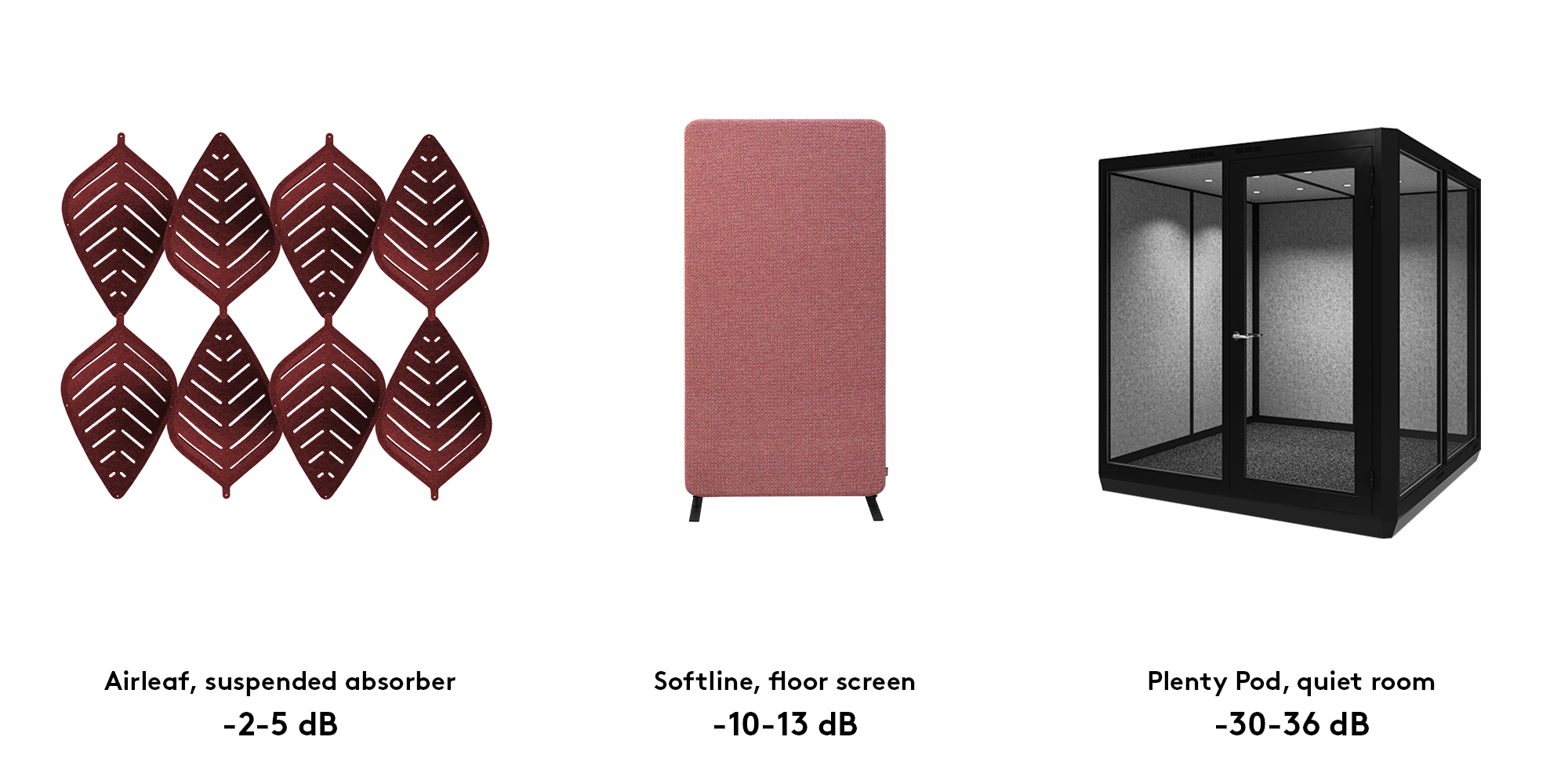
–
Reverberation time
The next step in achieving a better soundscape is to reduce the reverberation time, or the “echo effect.” Smooth, bare ceilings, walls, and floors reflect sound waves, causing sounds to bounce around the room. The reverberation time (RT60) is the time interval during which the sound level in a room has decreased by 60 dB. In a typical room, this usually takes 0.5 seconds, in a concert hall 0.8–1.5 seconds, in a church 1–2.5 seconds. The reverberation time depends on the room’s volume and the room’s absorption area, the objects and materials in the room that absorb sound.
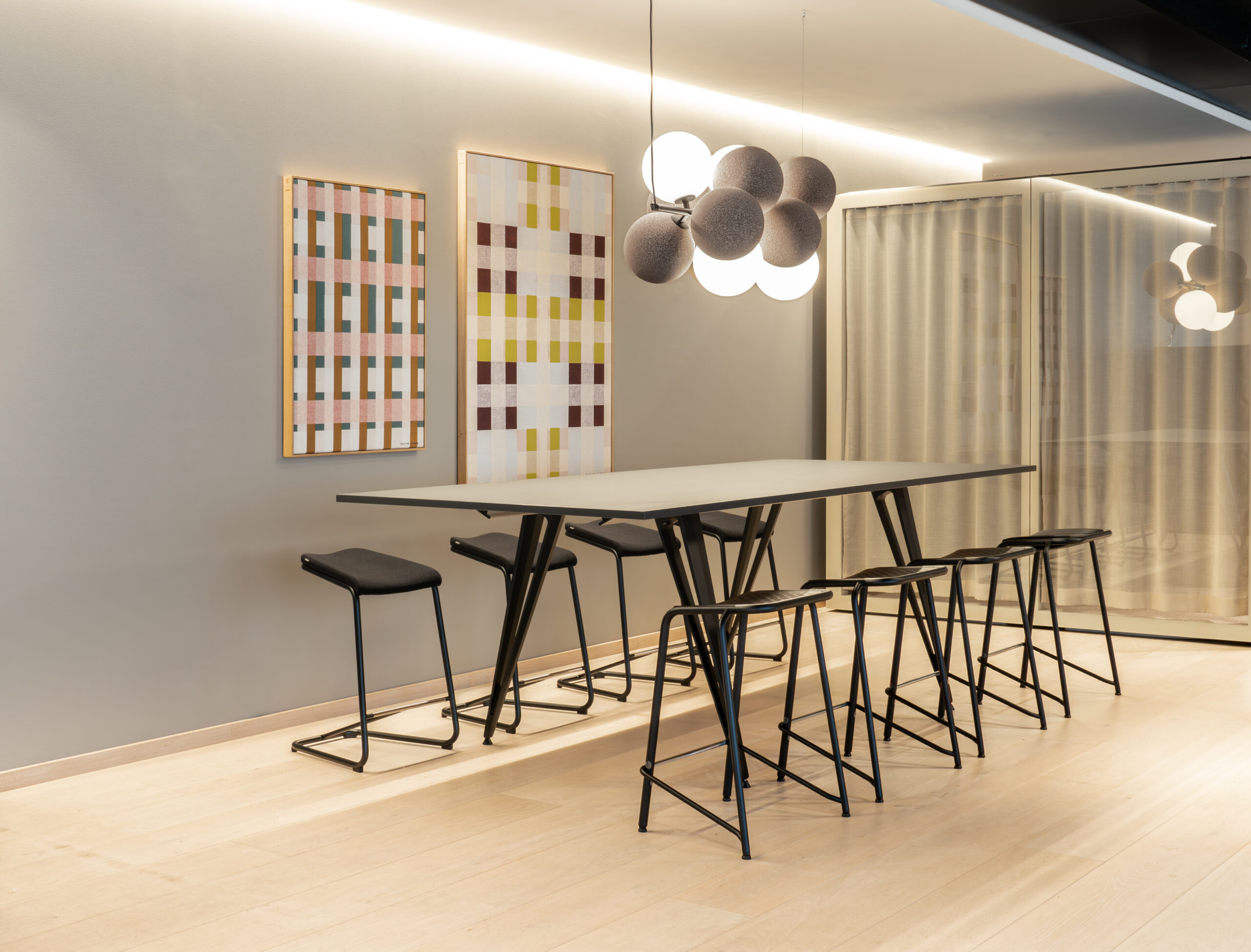
–
3 methods to reduce sound levels
There are three main methods to reduce sound levels and reverberation time: Absorption, Diffusion, and Attenuation. Many of our products combine these different methods.

Absorption means that sound hitting a surface is absorbed rather than reflected, transforming sound waves into thermal energy. Generally, porous or soft materials like textiles contribute to sound absorption. Hard materials like glass or concrete cause sound to reflect, creating echoes. With our absorption solutions, such as fabric-covered screens or wall panels with sound-absorbing cores, it’s easy to balance the presence of hard materials, reducing reverberation time and achieving a more harmonious soundscape.

Not only the combination of materials in a piece of furniture affects sound but also the surface’s structure or the furniture’s shape. A hard, flat surface provides a direct sound reflection, while a surface with folds or waves disperses sound waves by diffusing them. This effect is called diffusion. Harmonious soundscapes are achieved through a combination of diffusion and absorption.

Working with attenuation involves dividing the soundscape into separate acoustic zones using various types of barriers to prevent sound from traveling freely between two workstations, for example. The most radical way to work with attenuation is to furnish with quiet rooms, such as the Zen Pod, which completely prevents sound from entering and exiting. Another approach is to use screens. A screen can reduce the sound level by up to 15 dB. The normal sound level in an office is around 65 dB, so a 15 dB reduction is quite significant compared to a regular wall, which dampens the sound by about 35 dB.
–
Abstracta’s acoustic range
Floor Screens
Classic floor screens create spatiality and solve acoustic problems. Our floor screens can be assembled in a system to easily create a very good soundscape. Screens are perfect for open office landscapes.
–
Desk Screens
Function in the same way as floor screens but are mounted on desktops instead. Since desk screens are smaller than floor screens, they are not as acoustically effective.
–
Suspended Absorbers
Hanging or ceiling absorbers are an excellent alternative to traditional screens.
–
Acoustic Wall Panels
Wall-mounted sound absorbers are often suitable in environments where traditional screens do not always fit. They can be hung as artwork to be visible or discreetly placed to blend into the background.
–
Silent Pods
When you need a secluded and quiet environment for a meeting, focused work, or a phone call, a quiet room like the Zen Pod is a perfect solution. Zen Pod is a series of mobile, quiet rooms that work well in noisy environments like open office landscapes and public spaces.
–
Acoustic Furniture and Lighting
Working with furniture and lighting that has acoustic properties is a smart and effective way to improve the soundscape. We have a range of carefully designed acoustic lamps.
–
Different rooms – different acoustic solutions

Activity-based area
It can be very stressful to work focused in a noisy environment. Open floor plans, therefore, require acoustic solutions. Try to stop the sound where it originates with screens and wall absorbers. Quiet rooms work excellently in open environments as they create space for secluded meetings and undisturbed work. Other good solutions are acoustic tables and lamps.
Examples of product types: Wall panels, quiet rooms, desk screens, suspended absorbers, ceiling panels.
–
Work spaces
In a traditional workplace environment, it may be wise to choose different acoustic solutions and thus combine damping and diffusion. It is also wise to choose hybrid products that can serve as both a writing board and a desk screen, for example. Remember to use the ceiling as an absorbing surface. An innovative yet simple solution is the Sky ceiling panel, which can be easily mounted on existing indoor ceilings with magnets.
Examples of product types: Wall panels, quiet rooms, desk screens, acoustic furniture, ceiling panels.
–
Conference room
A conference room without acoustic products can be almost unbearable. Placing wall panels perpendicular to each other is effective, as sound will be absorbed faster than if they are placed parallel. Acoustic tabletops and acoustic lamps are also good choices for this type of room. Large tables have a significant impact on acoustics. If there are fans, their low-frequency noise can be dampened by placing acoustic columns in the room’s corners.
Examples of product types: Wall panels, acoustic lamps, and ceiling panels.
–
Auditorium
In large spaces like auditoriums and lecture halls, acoustic wall panels are essential to reduce the echo effect. Ideally, both side walls and the rear wall should be utilized. We also recommend acoustic lamps and ceiling absorbers to reduce the reverberation time. Consider placing acoustic columns in the corners to dampen disturbing low-frequency sounds.
Examples of product types: Wall panels, acoustic lamps, acoustic columns, and ceiling panels.
–
Cafeteria/Dining area
Noise in dining rooms, restaurants, and cafes can be challenging because such rooms are often large and made of hard materials like glass and concrete. It’s worth noting that when guests evaluate a restaurant visit, the soundscape plays a significant role. When designing the interior, it’s essential to consider the environment as a whole. Acoustic panels on one or two walls and ceiling absorbers are a good starting point. Room dividers and furniture with acoustic properties, such as sound-absorbing tabletops, acoustic lamps, and padded seating, all contribute to a better overall experience.
Examples of product types: Wall panels, acoustic furniture, floor screens, suspended absorbers, and acoustic lamps.
–
Lobby/Entrance area
Waiting rooms, reception areas, and lobbies in places like hospitals and hotels have undergone radical changes with digitalization. Today, they are used for all sorts of activities, leading to increased noise levels. To create a better soundscape, you can use elegant and effective wall panels combined with ceiling absorbers and acoustic lamps. Adding Zen Pods allows people to make phone calls and have meetings without disturbing others.
Examples of product types: Quiet rooms, wall panels, floor screens, ceiling absorbers.
–
Corridor
The corridor is an environment often overlooked in terms of acoustics. Here, we recommend wall absorbers that combine diffusion and absorption. A soft floor or a carpet runner also helps dampen sound. Dividers like floor screens can prevent sound from spreading. Acoustic lamps and ceiling absorbers, along with acoustic columns, also absorb and manage low-frequency noise.
Examples of product types: Wall panels, acoustic lamps, ceiling absorbers, and acoustic columns.
–
